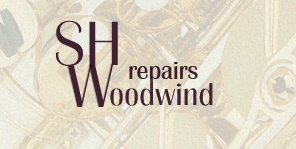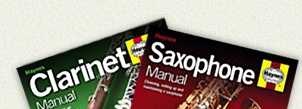|

Of all the horns I've reviewed on this site (and it's over a hundred
now), the TJ RAW has generated the most correspondence. In fact
I get more emails about this horn than all the rest put together
- and barely a week goes by without someone writing in to ask me
whether or not they should get one. My answer is always the same
- try one, and see what you think.
A fair number of correspondents want to know how I'm getting on
with the RAW in the long term - specifically whether I've found
any shortcomings or even just a few niggles, and whether I'm still
as happy with it as the day I got it. I mentioned this common line
of enquiry to a recent correspondent, and he suggested I write a
postscript to the review - to which I said "I'll think about
it"...which is repairer-speak for "Now why didn't I think
of that?"
It's been about five years since I swapped my Yamaha 23 for the
RAW, and I think perhaps the most telling thing is that I really
haven't given it a moment's thought. Whenever you change one brand
for another - be it a car, a washing machine, a power drill or even
a tin of soup - there are bound to be comparisons. Assuming a like-for-like
quality, you nearly always find things that your old brand did better,
even if the new brand wins on balance. So your new car might handle
better...but the old one had better brakes - or your new washing
machine is quieter...but the old one was quicker. It's par for the
course, but assuming you made the right choice you'll always be
happier with the new model.
But I've had (almost) none of that. I dare say a few people will
say that's because the 23 was crap - but I would say that it's because
the RAW has such versatility that it's able to build on the best
of what you had before...and take you that much further. In that
sense it's been an effortless transition, which is really the best
that you can wish for when moving on from a horn you've played for
a number of decades.
Now, I said I had almost none of the brand comparison thing, because
I do have a couple of niggles. The first is that it took some time
to get used to the extra weight. The RAW is almost half a kilo heavier
than the 23. And that's not an insignificant weight gain. Such things
make a big difference, especially if you're having to stand on stage
for three hours at a time. It took me some time to adjust to this,
but with a combination of posture tweaks, fewer pies and a couple
more sit-ups, I got used to the extra weight. If you're coming from
a heavier horn I doubt you'll notice the difference - but if you're
moving on from the Selmer MKVI (and it seems quite a few players
are), you too might find the extra weight takes some time to get
used to.
The other niggle is the thumb hook. There's absolutely nothing wrong
with it - it's the same design as used on just about any other horn
since the late '50s - but I guess I just got used to the simple,
static thumb hook on the 23. I tried moving it this way and that,
but could never quite find the sweet spot - so I swapped it out
for the Kooiman Forza (which
is an impressive piece of kit), which allows for a greater degree
of adjustability and comfort. But it's still not quite right - and
as daft as it sounds I'm beginning to think that I might replace
the RAW's thumb hook with one from the 23. For most players that
would be a retrograde step...but I guess it's just what you get
used to.
I should also say I ditched the case immediately - not because it
wasn't any good but simply because it has a zippered fastener...and
I hate the damned things. The RAW now lives in a Bam Hightech case,
which replaced my old Hiscox - both of which have proper, no-nonsense,
replace-'em-when-they-break catches.
I also get asked about how the finish is holding up.
I'm probably the wrong person to ask, because I'm not a very 'messy'
player. I doubt there's much about it that's down to technique rather
than just luck, but I don't seem to come off stage with my horn
looking like I've spent the last couple of hours gobbing on it -
and I'm also not the kind of player who wants to faff around drying
off and polishing my sax while the bar's still open and the bacon
rolls are hot.
From what I've seen of other RAWs from, shall we say, 'less dry'
players, they seem to vary from covered in grime to looking nicely
played in. In other words exactly the same as any old Selmer that
long ago dropped most of its lacquer. If it's an issue that bothers
you, just go for one of the lacquered variants. It won't play or
sound any different from the unlacquered models.
I've got a few bare patches where the fake patina has worn off which,
I feel, just adds to the personal character of the horn.
In terms of reliability I haven't had a single issue. Nothing's
gone wrong, nothing's fallen off...I haven't even needed to tweak
anything yet. I replaced the crook key octave pad with one made
from Sugru - but this was
really by way of running up an article on the tweak rather than
something that needed doing.
Playability-wise I've noticed the RAW's brought out a move to
a deeper, richer tone. Now, I don't mind a bright tone - in fact
I quite like it - but going for bright on a RAW seems a bit like
asking for a pint of lager at a champagne reception. It's there,
it's free - get in.
Something that may have hastened that move was being forced to use
a stand-mounted mic at a recent gig. My AMT
Roam is a single-channel radio mic, and it seems on this night
there was some crossover...and nowhere for the Roam to go (hey,
neat pun, eh?). Naturally, I whinged a bit - and, taking great pity
on me, the soundman whipped out this huge beast of a mic (an Electrovoice
RE320) and said "Why not try this, I think you'll be moderately
impressed"...or words to that effect anyway. There may have
been a "you ****" at the end, and a "you **********
*******" in the middle, and perhaps even a "FFS"
at the beginning. We'd sack him, but good staff are soooo
hard to get these days - and he's really very good indeed.
And impressed I was - but what was more impressive was just how
much low-end grunt I was getting out of the RAW, even with a brightish
setup (Bari Cyclone, Rico Plasticover 4).
This led me to wonder whether it might be worth revisiting Link
pieces. I used to play a Link, many years ago - but as the 'modern
tenor sound' became ever more brighter I switched to a succession
of pokier pieces, and maybe, just maybe, it was time to 'come home'.
So I got a whole bunch of new metal Links in and, with some anticipation,
tried them all out. And they were all bloody awful.
Don't get me wrong - I don't mean they were unsuitable (which they
were), they really were awful. I've played lots of good 'unsuitable'
pieces, ranging from moderately cheap to cringingly expensive -
and even though they weren't for me they at least blew very well.
But I struggled to make the Links work. I'm sure they never used
to be like that.
As it write this article it occurs to me that it's turned into
something of a review - partly of the RAW itself, but also of my
own experiences with it - and if there's one thing I like to get
into my review, it's perspective. It's really why I started writing
reviews, I got so fed up of reading glowing testimonials that were
full of subjective statements and that rarely, if ever, took into
account the fact that no matter how good the horn played for the
reviewer, it didn't mean that everyone would like it.
So we need a bit of balance. And this is it.
I'm extremely flattered that people write in to ask how I'm getting
on with the RAW, and for the most part I assume that they're wanting
an answer based on the technical performance of the horn. No problem
there, you can't argue with nuts and bolts. But some people ask
for my impressions from a playing perspective, and it's here were
the waters get a little muddier.
I consider myself to be a competent player. I'm sure I could be
better, but I'm rather lazy. In fact I asked one of my clients (a
notable player himself) for a few lessons - and the answer he gave
me still echoes in my head like the voice-over in one of those classic
Hollywood dream sequences ( "There's no place like home...there's
no place like home"). "You don't need lessons, you know
what needs to be done". He's right, of course - scales, scales,
more scales, arpeggios, more scales...and yet more scales.
I remain happy to get by - and as many a client has heard, I get
by pretty well.
I'd like to say I never practice - which is something I said to
Pete Thomas once...who then asked me how many times a day I might
find myself playtesting a horn, and for how long. Turns out I do
practice.
So while I wouldn't consider myself to be a whizz-bang player I
can nevertheless get on stage and pass muster (and I know when not
to get on stage, which is equally as important). And every once
in a while a player whose skills I admire will tip me a compliment.
Which is nice.
But I have the benefit of having played an astonishing variety
of horns, and this is where I feel I stand on far more solid ground.
I get to see, work on and play a particular model of horn in various
states - from brand new or in exceptional condition to slightly
shabby and in need of a tweak - right through to completely neglected
and falling to bits.
And that, I feel, is my perspective. It's not based on playing a
mere handful of horns, nor just of playing perhaps one or two horns
for decades - it's much more of a melting pot, with impressions
formed from each of the many thousands of horns that have ended
up on the workbench.
If people find that useful then that suits me - I shan't complain
- but I still maintain that it's just one in the many factors that
you should take into account when looking for a new horn.
You should also never forget that when it comes to how a horn plays,
there's only one opinion that really counts - and it's yours.
So if I had to sum up my own impressions of playing the RAW these
last few years I would say I could do it in just three words. Seamless,
transparent progression.
|


